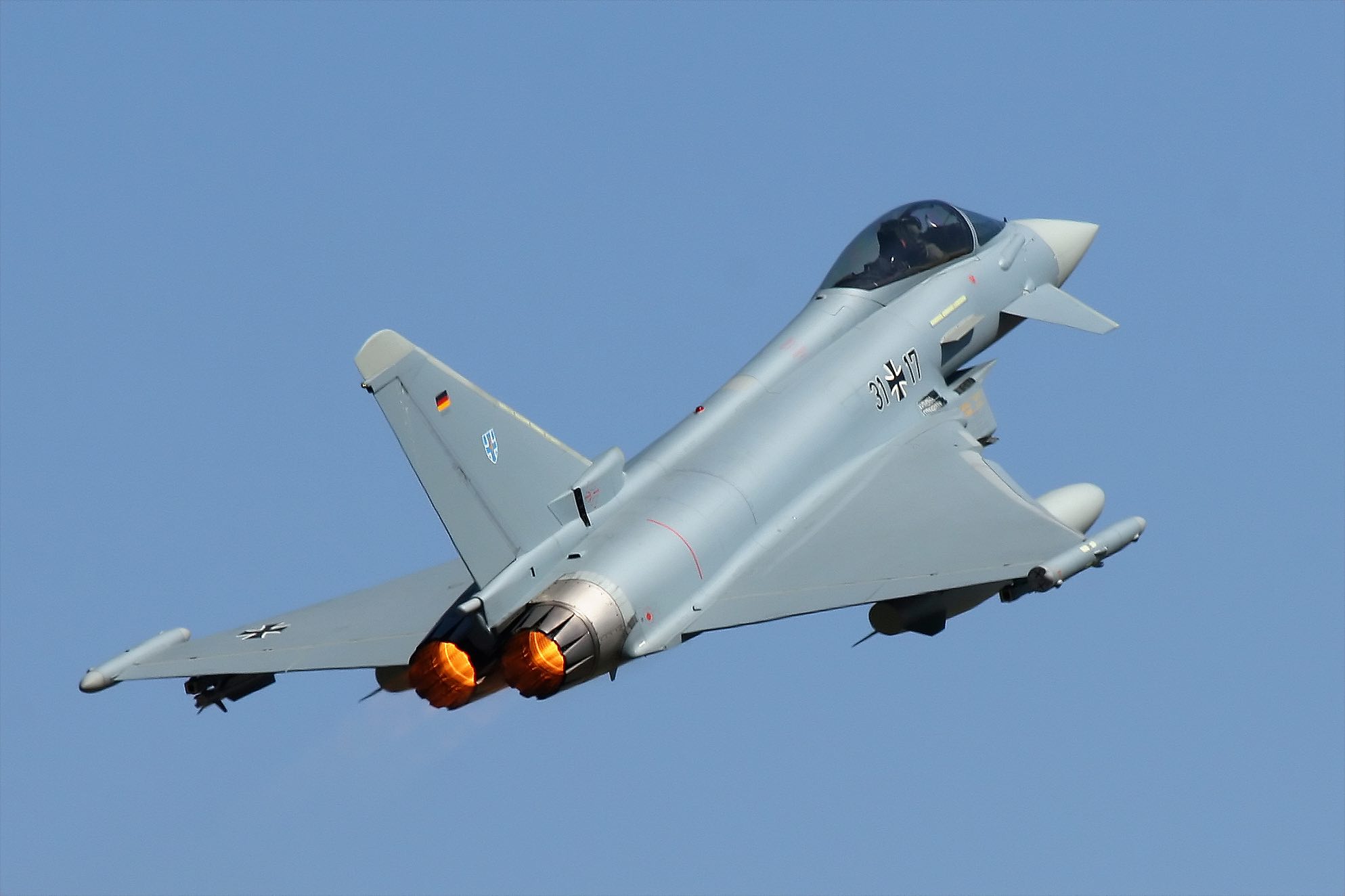


Berlin’s decision to approve an €8 billion defence spending package, centred on 20 new Eurofighter jets, is far more than a routine procurement. It is a clear signal that Germany is repositioning itself as a serious military power in an increasingly dangerous world.
The Bundestag’s budget committee quietly signed off on the deal last week. At its heart lies €3.75 billion for the next generation of Eurofighters, to be delivered between 2031 and 2034. The remainder funds maintenance upgrades, new simulators, and the crucial electronic warfare systems that give modern air forces their edge. In other words, this is not a mere replenishment of aging fleets. It is an attempt to leap ahead technologically — to be able to fight, and win, in contested skies.
This shift matters. For decades, Germany’s defence posture has been characterised by hesitation. Even after Russia’s invasion of Ukraine in 2022, the country’s vast €100 billion special fund often seemed like a paper tiger: announcements were grand, implementation sluggish. But this procurement comes not from that special fund. It comes from the regular defence budget — a sign that rearmament is no longer being treated as an emergency measure, but as a permanent feature of national policy.
Germany is not rearming in a vacuum. Across Europe, military spending has surged as governments belatedly grasp the scale of the threat on the continent’s eastern flank. Yet Berlin’s actions carry particular weight. With the largest economy in Europe and a pivotal geographic position, Germany’s capabilities shape the credibility of NATO’s entire deterrence posture. If Germany steps up, the centre of gravity in European defence shifts decisively.
The Eurofighter order represents precisely that kind of step change. Unlike the Tornado fleet it will eventually replace, these aircraft are not simply about patrolling skies. The new tranche will include enhanced electronic warfare and suppression of enemy air defence capabilities — the kinds of systems that allow air forces to degrade radar networks and neutralise sophisticated surface-to-air missile batteries. In modern warfare, these are not luxuries; they are prerequisites for survival.
Equally significant is what Germany is not buying: American hardware. The Eurofighter programme, built jointly by the UK, Germany, Italy and Spain, is Europe’s flagship aerospace project. By committing billions to new Eurofighters rather than more American F-35s, Berlin is throwing its weight behind Europe’s defence industrial base. That is not mere symbolism. If Europe wants strategic autonomy — the ability to act without constantly relying on Washington — it must invest in its own advanced platforms. This purchase is a down payment on that ambition.
Of course, there are risks. Deliveries will not begin until 2031, leaving a gap of several years during which Germany must coax more life out of aging airframes. Large defence projects are notoriously prone to cost overruns, political bickering, and technical delays. And there is the perennial question: will Germany’s political will hold firm if domestic pressures grow?
Those caveats are real. But they should not obscure the strategic message: Berlin is acknowledging, at last, that Europe cannot forever free-ride on American airpower. With U.S. politics drifting towards isolationism, and doubts over future administrations’ commitment to NATO, Europe’s complacency has become untenable.
Main Image: By Krasimir Grozev – Own work, CC BY-SA 3.0, https://commons.wikimedia.org/w/index.php?curid=10881998
You must be logged in to post a comment.
The West Cannot Afford to Flinch: Ukraine’s Fight Is Our Fight